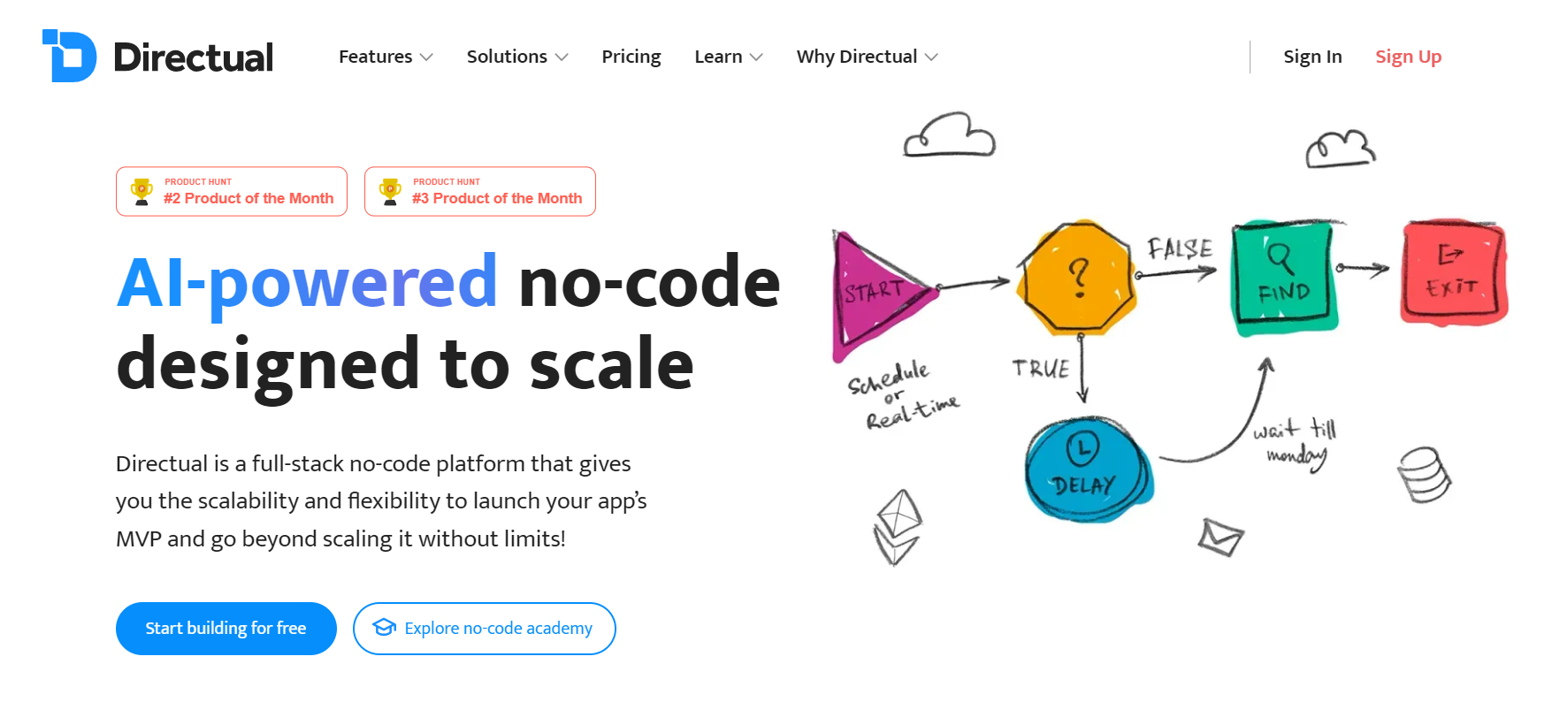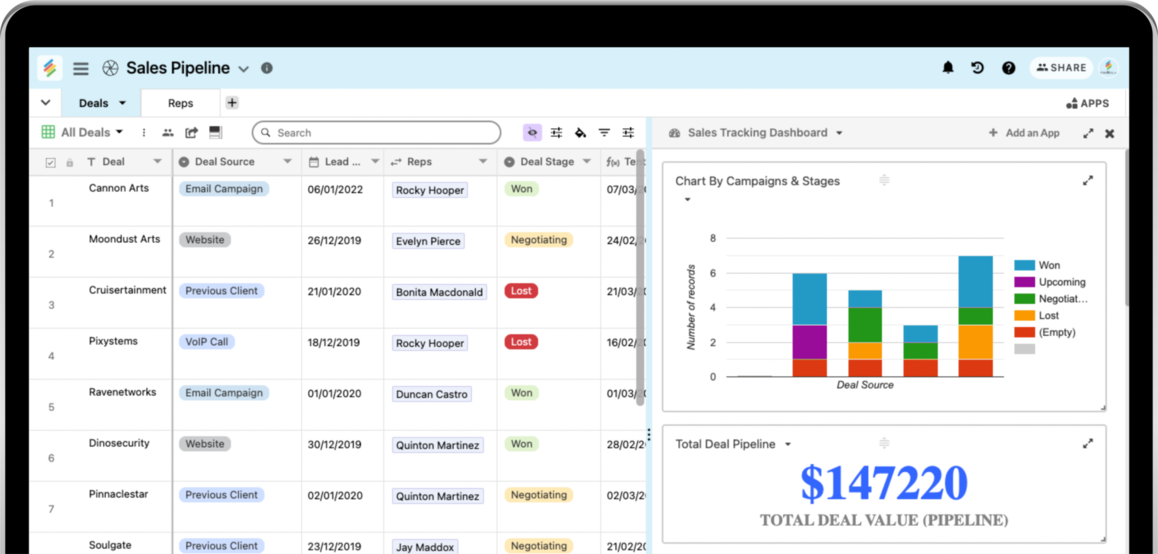Why No-Code is the Future of Open System Data Source Production for Organizations
Why No-Code is the Future of Open System Data Source Production for Organizations
Blog Article
Discovering the Advantages of Scalable Data Sources That Need No Coding Abilities for Efficient Data Monitoring Solutions
The emergence of scalable databases that get rid of the requirement for coding abilities presents a transformative possibility for organizations looking for efficient data management remedies. By allowing non-technical users to harness the power of information through instinctive user interfaces, these systems improve availability and foster cooperation across diverse groups. Their cost-effectiveness and adaptability to evolving organization needs can significantly enhance operational processes. As we take into consideration the implications of such improvements, it comes to be essential to check out how they can reshape the landscape of information monitoring and drive sustainable growth in a competitive atmosphere.
Enhanced Availability for Users
Boosted ease of access for customers is a vital aspect of scalable data sources, guaranteeing that information administration systems are straightforward and user-friendly. In an era where data-driven choices are critical, availability permits a broader variety of customers, including those without comprehensive technological competence, to involve with data source systems effectively. This democratization of data access facilitates boosted cooperation throughout divisions, empowering workers to make and draw out insights informed choices.
Easy to use interfaces, such as visual information and drag-and-drop functions representation, streamline complicated data communications. These enhancements reduce the understanding curve associated with typical database management, making it possible for individuals to concentrate on leveraging data instead of grappling with technological complexities. Additionally, scalable databases frequently incorporate adjustable dashboards and real-time analytics, providing customers with instant insights customized to their particular demands.

Cost-Effectiveness and Resource Financial Savings
Efficient data monitoring not only rests on availability but additionally on cost-effectiveness and source savings. Scalable data sources created for users without coding skills considerably reduce economic problems generally connected with traditional data source administration systems. By eliminating the requirement for specialized programming expertise, companies can assign their resources extra effectively, focusing funds on core organization activities as opposed to extensive training or working with skilled personnel.
Moreover, these data sources typically utilize cloud-based solutions, which better lower expenses related to hardware and upkeep. Organizations can scale their database options according to their demands, preventing the expenses sustained from over-provisioning sources. This flexibility suggests businesses can adjust to transforming needs without incurring unneeded costs, causing significant lasting savings.
In addition, easy to use user interfaces streamline information access and monitoring processes, minimizing the moment invested in administrative tasks. This effectiveness equates right into labor expense savings, permitting groups to concentrate on strategic initiatives as opposed to routine maintenance. On the whole, adopting scalable databases that need no coding skills promotes a much more cost-efficient approach to information monitoring, enabling companies to optimize their sources while preserving high degrees of operational effectiveness.
Improved Collaboration Across Teams

Moreover, scalable databases promote seamless communication among group participants. With user-friendly user interfaces that call for no coding skills, workers can quickly develop, change, and share reports or dashboards customized to their details needs. This democratization of data equips non-technical customers to add insights, boosting the collaborative environment.
Furthermore, these data sources sustain simultaneous access, permitting several customers to service the same go to my site dataset concurrently. This attribute improves productivity, as groups can take part in joint data analysis without the threat of version control issues. The ability to leave comments or notes directly within the data source even more advertises discussion and clarifies data interpretations.
Streamlined Data Monitoring Processes
In today's data-driven atmosphere, organizations recognize the requirement of structured data administration refines to make best use of performance and precision. By leveraging scalable databases that require no coding abilities, organizations can streamline their data handling and reduce the intricacies normally connected with standard database systems. This accessibility encourages non-technical individuals to engage straight with information, helping with quicker decision-making and reducing dependence on specialized IT workers.
Streamlined information administration processes improve workflow by automating regular tasks such as information access, recognition, and reporting. Automated information integration ensures that details from different sources is accumulated perfectly, eliminating silos and cultivating a combined sight of essential service metrics (no-code). Straightforward interfaces permit workers to manipulate information quickly, allowing them to create insights that drive critical efforts without the requirement for considerable training.
This efficiency not just accelerates functional processes yet also lessens the capacity for human mistake, making sure that data stays accurate and reliable. Eventually, structured data monitoring processes with scalable data sources result in improved efficiency, allowing companies to concentrate on core tasks while making sure that their data management techniques are reliable and reliable.
Scalability for Expanding Companies

For broadening business, the capability to scale up or down is essential. A scalable database can handle an increase of information produced from new customers, items, or services, guaranteeing that company procedures continue to be undisturbed. In visit their website addition, these data sources supply the ability to handle peak loads efficiently, which is crucial throughout periods of rapid development or seasonal spikes.
Additionally, several scalable data source solutions are made with straightforward user interfaces that require no coding abilities, encouraging non-technical team to manage information efficiently (no-code). This democratization of information administration enables companies to allocate resources tactically and minimize dependency on specialized IT workers
Eventually, adopting a scalable database not just enhances functional efficiency however additionally fosters an atmosphere where businesses can innovate and advance without the restraints of conventional data source systems. This flexibility positions organizations for lasting success in today's affordable landscape.
Conclusion
In final thought, scalable data sources that call for no coding skills offer substantial benefits for efficient data administration. These systems boost accessibility for non-technical users, decrease functional prices, and advertise collaboration across teams. By improving information monitoring procedures and supplying scalability for growing businesses, such options enable organizations to adapt to altering needs effectively. Ultimately, the adoption of these easy to use data sources fosters development and settings services for lasting success in a vibrant environment.
Boosted access for customers is a crucial aspect of scalable databases, making certain that information administration systems are intuitive and user-friendly.Easy to use interfaces, such as drag-and-drop features and aesthetic information depiction, streamline complicated data interactions. In general, taking on scalable data sources that require no coding abilities promotes an extra cost-efficient method to data monitoring, allowing companies to optimize their resources while keeping high degrees of operational performance.
By leveraging scalable databases that require no coding abilities, organizations can simplify their information handling and decrease the complexities typically linked with standard database systems - no-code.Structured data monitoring procedures boost process by automating regular tasks such as data access, validation, and coverage
Report this page